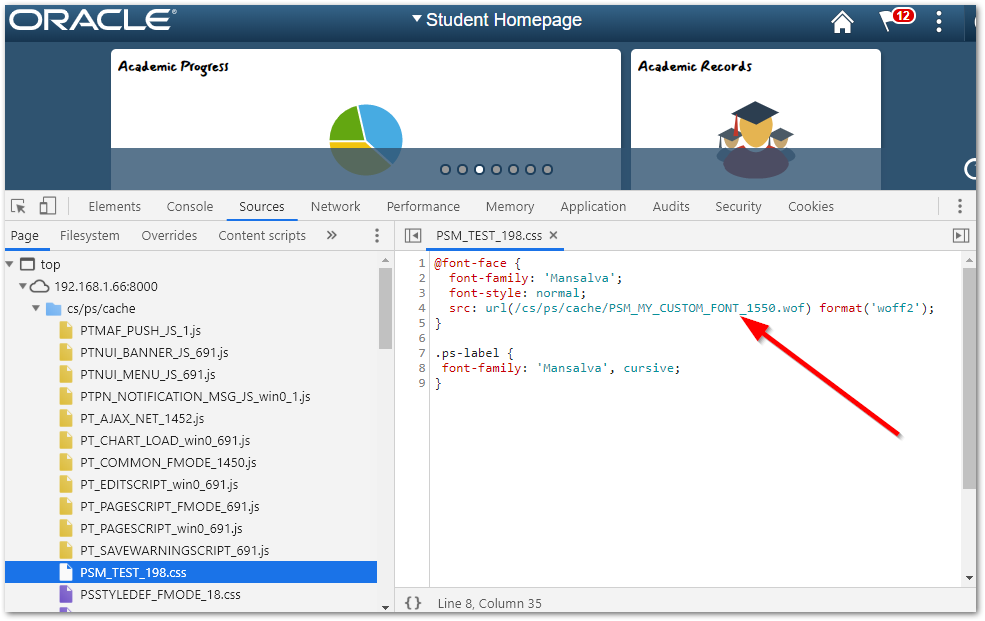Managing Custom Font Files
Design requirements often require PeopleSoft developers to use custom web fonts when styling PeopleSoft applications. An easy way to make use of a custom font is to link to a third-party server that hosts the font files.
@font-face {
font-family: 'Mansalva';
font-style: normal;
src: url(https://fonts.gstatic.com/s/mansalva/v1/aWB4m0aacbtDfvq5NKliKY8.woff2) format('woff2');
}
.ps-label {
font-family: 'Mansalva', cursive;
}
However, this method causes an undesirable dependency on the third-party server and as well as might not be an option with local firewall constraints.
An Alternative
Another option to access custom fonts from PeopleSoft application CSS is to host the custom web font on the
PeopleSoft web server. This requires the web font file(s) to be placed in an accessible directory (typically
the fonts directory) on the server to be consumed from the application CSS.
@font-face {
font-family: 'Mansalva';
font-style: normal;
src: url(../fonts/aWB4m0aacbtDfvq5NKliKY8.woff2) format('woff2');
}
.ps-label {
font-family: 'Mansalva', cursive;
}
This option works well, but managing custom font files on the web server can be problematic from a lifecycle management perspective as the fonts are not managed by PeopleTools. The self-hosting of font files requires a different migration workflow versus the standard App Designer migration. This variation of object management causes more moving parts and higher chances for mistakes to occur when performing migrations and installations of the custom application code.
A Solution
A technique to avoid having to manage custom font files on the web server is to store the font files in Image
objects within App Designer. These Image objects can be referenced in the application CSS with the use of
the %Image meta-function.
@font-face {
font-family: 'Mansalva';
font-style: normal;
src: url(%Image(PSM_MY_CUSTOM_FONT)) format('woff2');
}
.ps-label {
font-family: 'Mansalva', cursive;
}
The %Image meta-function will resolve to a URL of the font file stored in the web server cache directory:
This technique allows for the custom font file to be served from the web server without having to manually manage the file on the server. Additionally, this technique allows App Designer to manage/migrate the custom font to ease lifecycle management.

Comments
Simon Chiu
thanks Colton: this is a nice elegant solution, that also solves CORS issues if using a portal. Thanks!!
Leave a comment
Your email address will not be published. Required fields are marked *